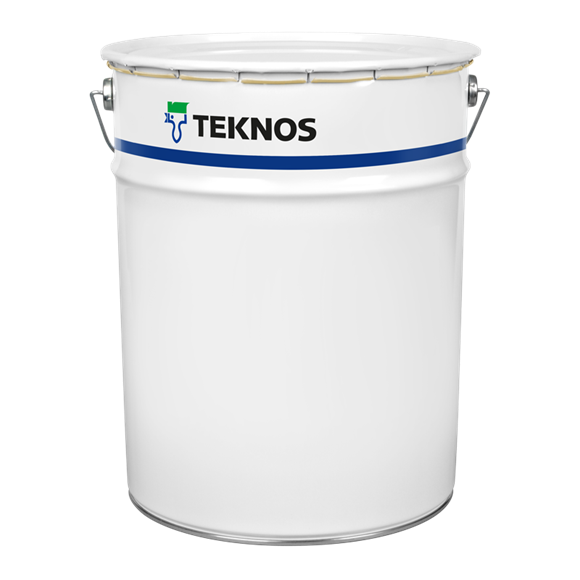TEKNODUR AQUA PRIMER 1121-00
Polyurethane paint

- Primer
TEKNODUR AQUA PRIMER 1121-00 is a water-borne, two pack polyurethane paint. The hardener is an aliphatic isocyanate resin.
The paint is used as a primer on composite, HDF and wooden surfaces in water-borne coating systems of wood industry. The paint will adhere well onto several composite surfaces. The paint will form an even and easy to sand surface. Due to many different types of composites and plastics it is best to contact the manufacturer to make sure of the adhesion onto the substrate in question. The hardener is an aliphatic isocyanate resin.
Technical data sheet
Surface preparation
Composite surfaces are roughened or washed with emulsifying washing agent and rinsed with clean water.
Make sure before application that the possible release agents have been removed from the composite surface.
It is best to check with the manufacturer to make sure of the suitability of the surface preparation methods (corona treatment, flaming).
Wooden and HDF/MDF surfaces are roughened, if needed.
Application
MIXING OF THE COMPONENTS:
The base and hardener are mixed together and stirred mechanically thoroughly before application down to the bottom of the vessel. The hardener is mixed undivided and in one go into the base. The stirring time is at least 5 min. Inadequate stirring or incorrect mixing ratio results in imperfect curing and impaired film properties.
THE READY MIXTURE MUST BE USED WITHIN THE POT LIFE, MIXTURES OLDER THAN THIS ARE UNFIT FOR USE.
Application conditions
The surface to be treated must be dry. During the application and drying period the temperature of the ambient air, the surface and the product shall be above +10 °C and the relative air humidity below 70%. Additionally, the temperature of the surface to be treated and the product must be at least +3°C above the dew point of the ambient air.
Surface temperature, film thickness, drying temperature and ventilation affect the drying of the paint. The paint is dry when all water has evaporated from the paint film. It is essential that all painted surfaces have sufficient ventilation.
If the painted surface will be exposed to weathering, moisture or low temperatures (below +10°C) thick paint films are to be avoided and the last coat must be allowed to dry for at least 24 hours (at +23°C) before exposure.
Low temperatures and insufficient ventilation slow down the drying process.
As the static electricity on synthetic surfaces causes problems it is recommended not to paint when the relative humidity of the air is below 40% during the time of application.
TEKNODUR AQUA PRIMER 1121-00 is easy to sand after drying.
Storage
The storage stability is shown on the label.
Store indoors in a cool and dry place and in a tightly closed can. The hardener reacts with air humidity.
Must not freeze.
Conventional spray gives the best result.
| Total mass of solids | abt. 850 g/l |
|---|---|
| Volatile organic compound (VOC) | abt. 100 g/l |
| Pot life | 3 h (+23 °C) |
| Mixing ratio | 10:1 by volume (comp. A : comp. B) |
| Hardener | Comp. B: TEKNODUR AQUA HARDENER 7313 |
| Gloss | Semi-matt |
| Practical spreading rate | The values depend on the application technique, surface conditions, overspray, etc. |
| Drying time – dust free | 1 h (ISO 9117-3:2010) |
| Drying time – touch dry | 2 h (ISO 9117-5:2012) |
| Drying time – forced drying | +60 °C / 30 min |
| Thinner | Water or TEKNOSOLV 1936. |
| Clean up | Water, TEKNOSOLV 6060, TEKNOSOLV 9521. When painting equipment used for application of solvent-borne paints is used for water-borne paints the equipment must be cleaned carefully: 1. Wash with solvent. 2. Wash with washing solvent for water-borne paints, e.g. TEKNOSOLV 6060. 3. Rinse with water. When shifting from water-borne to solvent-borne paints act in reverse order. |
| Colours | By agreement. |
| Safety markings | See safety data sheet. The hardener of the product and the ready mixture contain isocyanates. In poorly ventilated areas and especially when using spray application we recommend the use of a fresh air mask. In short or temporary work, a mask with combined filter A2-P2 can be used. In this case eyes and face are to be protected. The hardener can must be opened with caution, as pressure may develop in the can during storage. |